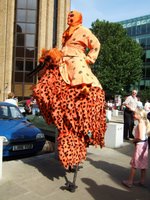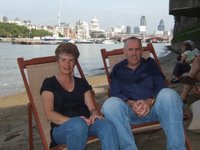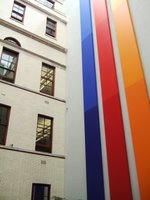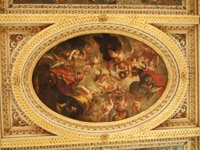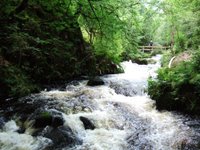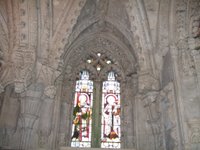 The weekend started at Little Gaddesden village church, where they were preparing for their harvest festival. From there we did a two-mile walk circling the village including a lunch stop at their traditional English Pub.
The weekend started at Little Gaddesden village church, where they were preparing for their harvest festival. From there we did a two-mile walk circling the village including a lunch stop at their traditional English Pub.
The large house for this village is Ashridge. We had read that the gardens were open in the afternoon, but when we arrived, the opening hours on the sign said they were open but also had a ‘Closed’ sign up. Since it was just a few minutes after the supposed opening time and the gate was not locked, we invited ourselves in for a quick look around. The buildings and gardens combine to give an inspiring picture of past splendour: quite an amazing place. (see more pictures)
 Since we were a little unsure of our status in the garden we moved on to do one of the Chiltern walks based around Cow Roast. After a pleasant stroll along The Grand Union Canal we found the walk
Since we were a little unsure of our status in the garden we moved on to do one of the Chiltern walks based around Cow Roast. After a pleasant stroll along The Grand Union Canal we found the walk turned into our own harvest festival of sorts, as the path was continually lined with various trees and bushes covered in red berries.
turned into our own harvest festival of sorts, as the path was continually lined with various trees and bushes covered in red berries.One highlight of the walk was King Charles Ride. This is now part of the Ridgeway track and was an avenue of large lime trees, planted over two hundred years ago.
 Sunday was too pleasant to stay inside, so we headed again to the Chilterns. After a pleasant pub lunch in Chalfont St Giles, we walked a loop track to Chalfont St Peter and back.
Sunday was too pleasant to stay inside, so we headed again to the Chilterns. After a pleasant pub lunch in Chalfont St Giles, we walked a loop track to Chalfont St Peter and back.Chalfont St Giles is the perfect traditional English village: complete with village pond, green, several pubs and church, a very pleasant place to visit and the home of Milton, of Paradise Lost fame. (see more pictures)
